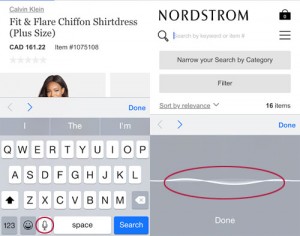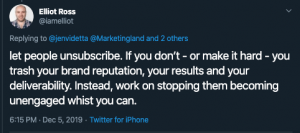With another independent CDP being acquired and integrated with a larger marketing suite, there are signs of a pattern.
Using psychology and data to get customers closer to purchase
With limited resources, marketers need every edge they can get, including psychology, to get customers closer to purchase. The first psychological insight to put into practice is brand awareness amid all this digital noise and clutter, said Megan Sangha, Senior Product Marketing Manager for Wrike in her presentation at MarTech.
“Brand awareness can be found in obvious areas like the ad you see when you’re scrolling through social media, or a pop-up that you click on,” said Sangha. “When you’re reading through a news outlet, or an ad you hear while streaming music, or your favorite podcast, but it also can be found in less obvious places, like a conversation you overheard in a coffee shop, or a certain brand that you’re seeing everyone wear at the gym.”
Other key psychological tools at marketers’ disposal include scarcity bias, authority bias, the power of “free” and the power of “now.” “Understanding behavioral bias and the customer journey are really important,” Sangha said. “So much so that marketing teams that use these principles and psychology see higher customer satisfaction, lower customer turnover, churn, improve sales process and receive better advocacy from current customers.”
Google delays the timeline for testing FLoC
FLoC (Federated Learning of Cohorts) has faced a series of hurdles over the last few months, from a U.K. regulatory requirement that Google not discriminate against its rivals in favor of its own advertising business to internal discussions revealing that a consensus on tracking cohorts (as opposed to, say, topics) has yet to be reached.
Now Google’s monthly Privacy Sandbox timeline update indicates that the company will push back FLoC testing from Q4 2021 (announced in July) to Q1 2022. The “Discussion” period, originally set to end in Q3 2021, in which “technologies and their prototypes are discussed in forums such as GitHub or W3C groups,” has been extended through to the end of Q4 2021. This also has an impact on when testing is estimated to end, pushing that back from the end of Q2 to the end of Q3 2022.
Why we care. With enormous concern among advertisers and publishers that the deprecation of third-party cookies on Chrome will crush their ability to target users with relevant ads, comes an urgency to see whether FLoC is a workable alternative (as well as whether Google, despite the U.K. regulator’s warning, will try to implement FLoC as a walled garden).
Getting early answers to these questions would be welcome, but right now FLoC-related deadlines seem constantly to be receding.
How marketers responded to the pandemic with stack replacements
“Over the last 18 months, you know during this COVID time, a lot of organizations had their budgets frozen or were asked to reduce costs in marketing,” said Anita Brearton, CEO of tech management platform CabinetM. “So there was a lot of analysis happening around the tech stack.”
Brearton was speaking at the MarTech conference about the results of our 2021 MarTech Replacement Survey (download here — no registration needed). “They have the opportunity to assess new products, and they find that they get more features for the same or less money then that’s a motivator to move forward,” Brearton said.
Brearton shared that CabinetM did replace their CRM during this time period. This helped the company streamline some of their automation. “We were able to combine our marketing automation and CRM and do a lot more,” she said. “So I do think it’s a functionality issue. It’s a scaling issue.” This led CabinetM to rethink the CRM category, taking into account all players that have entered the scene.
“We’re rationalizing the CRM category on Cabinet M,” said Brearton. “At the moment there are hundreds of platforms in that category. It’s extraordinary, so I have to imagine that the sales people from all those platforms are busy knocking on doors and are finding some takers.”
Perkuto acquired by MERGE
The marketing operations consultancy Perkuto, responsible for MarTech’s MOPs Rundown series of articles, has announced its acquisition by storytelling tech platform MERGE.
MERGE offers a range of agency services, including strategy, performance marketing, creative and comms, to clients in healthcare, financial services and commerce. It describes its mission as promoting health, wealth and happiness.
Perkuto will expand MERGE’s marketing operations offerings, bringing Marketo and Workato managed services to MERGE clients. At the same time, Perkuto will be able to leverage creative, performance marketing and CX design capabilities from MERGE.
Why we care. This is an example of how the two big parts of modern marketing fit together like two pieces in a jigsaw puzzle. Yes, MERGE already had engineering, app development and website design. It had technology. But with the Perkuto acquisition it adds a big dose of marketing operations. Modern marketing starts where storytelling and operations fit seamlessly together.
Joke of the day
Flight attendant: “Is there a marketer on the plane?”
Me: “Depends, what’s the budget?”
The post Is the CDP category being shrunk by acquisitions?: Monday’s Daily Brief appeared first on MarTech.
MarTech(39)







